Adventures of a Spectacular Sporophyte
In the spring of my junior year, I took a plant biology course that covered everything from the cellular components of plants to modern agricultural practices and advances in biotechnology. For one of my final assignments, I created a picture book illustrating the origin of land plants and sporophyte dominance.
You can view the book as a slideshow below or read it as a PDF. If you are unfamiliar with any of the narrative’s technical terminology, I’ve provided definitions and explanations at the bottom of this page.
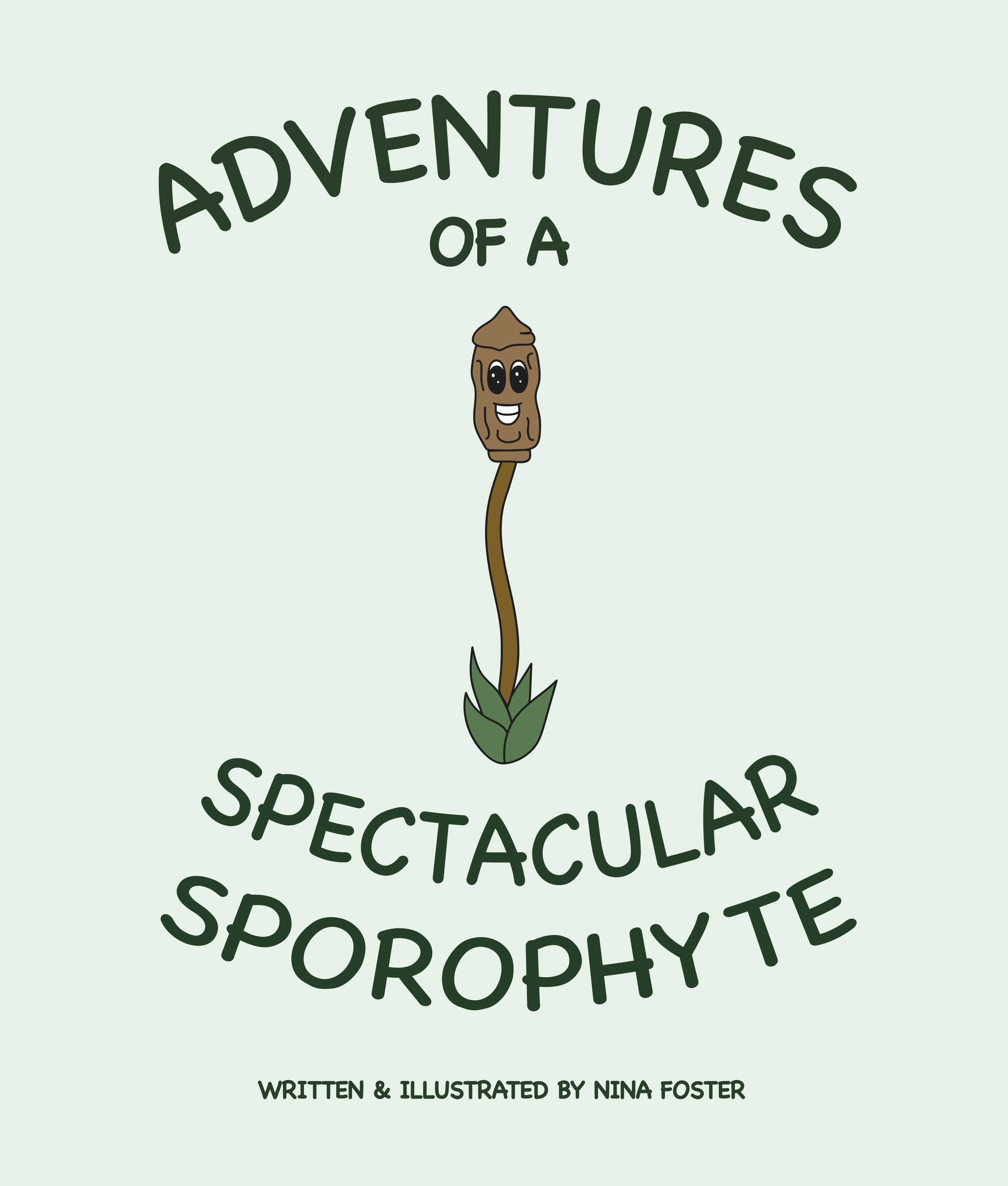
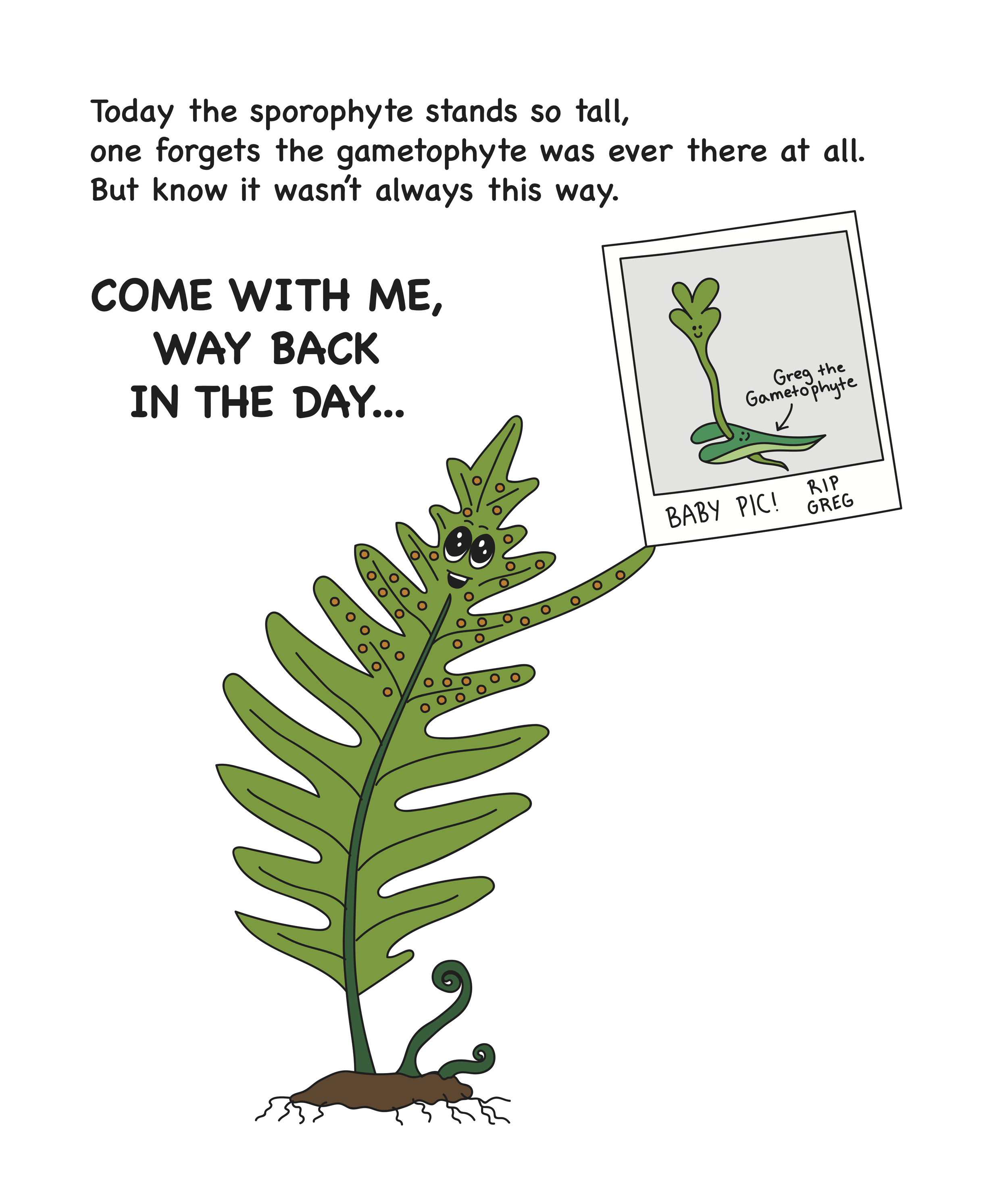
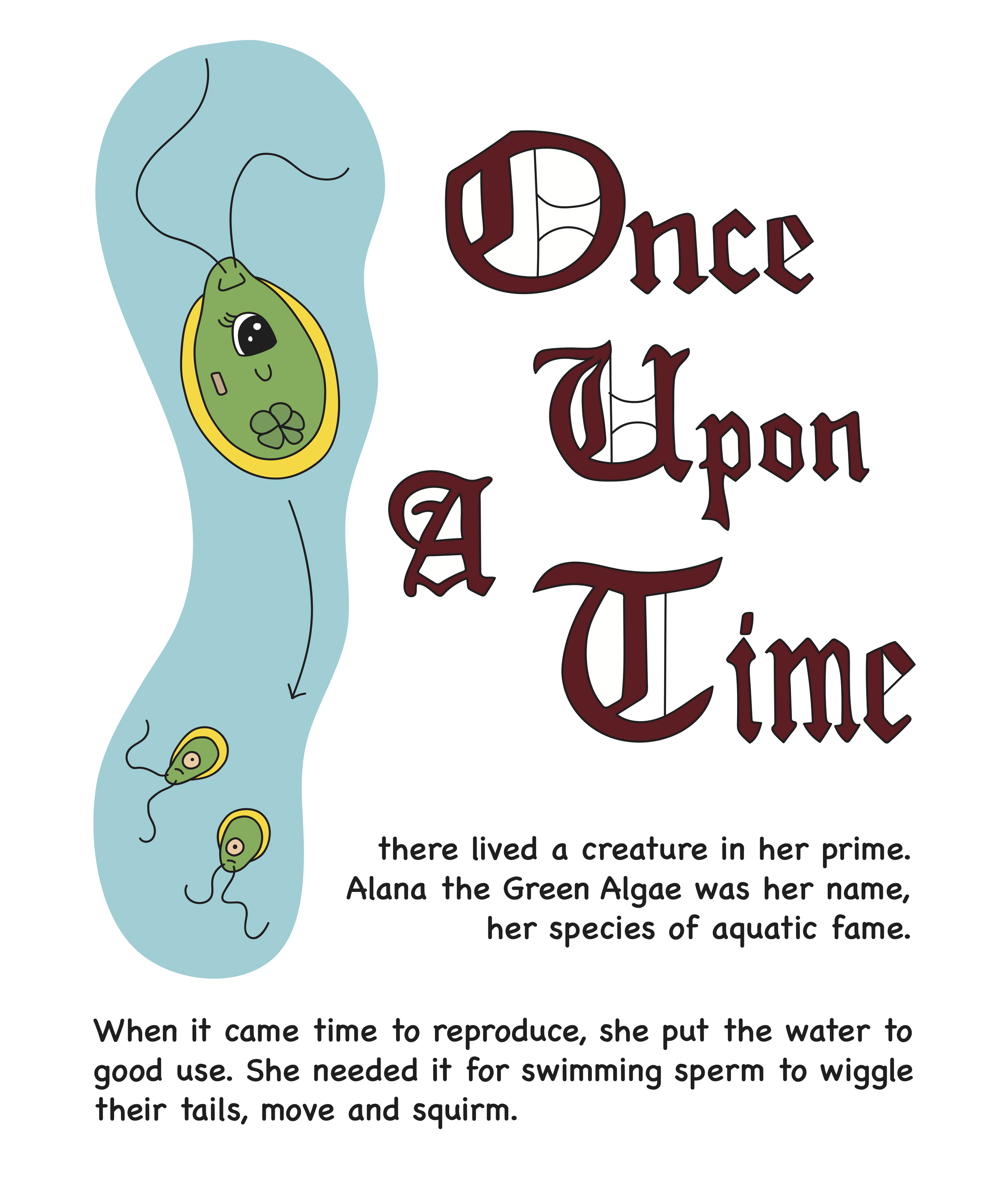
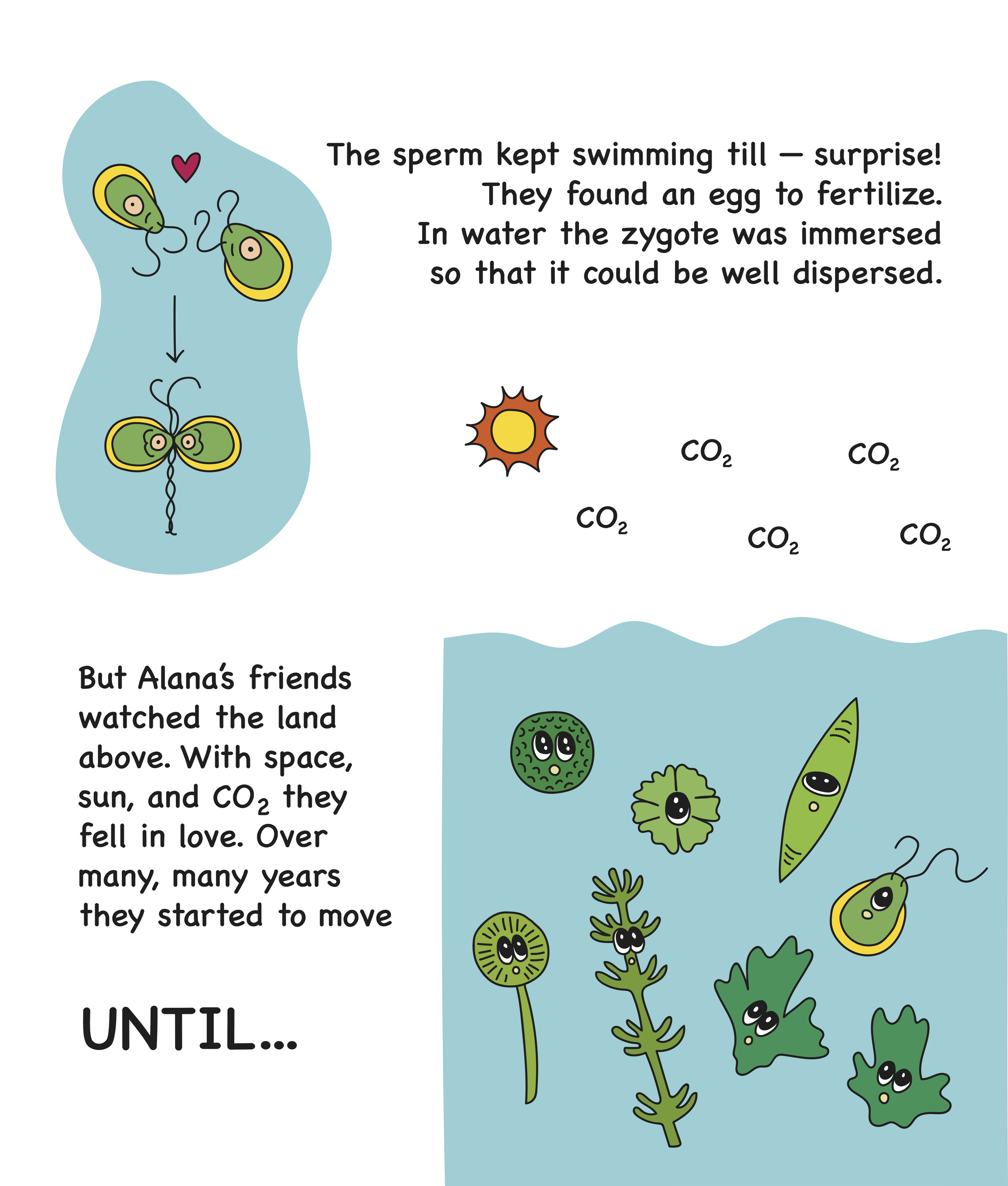
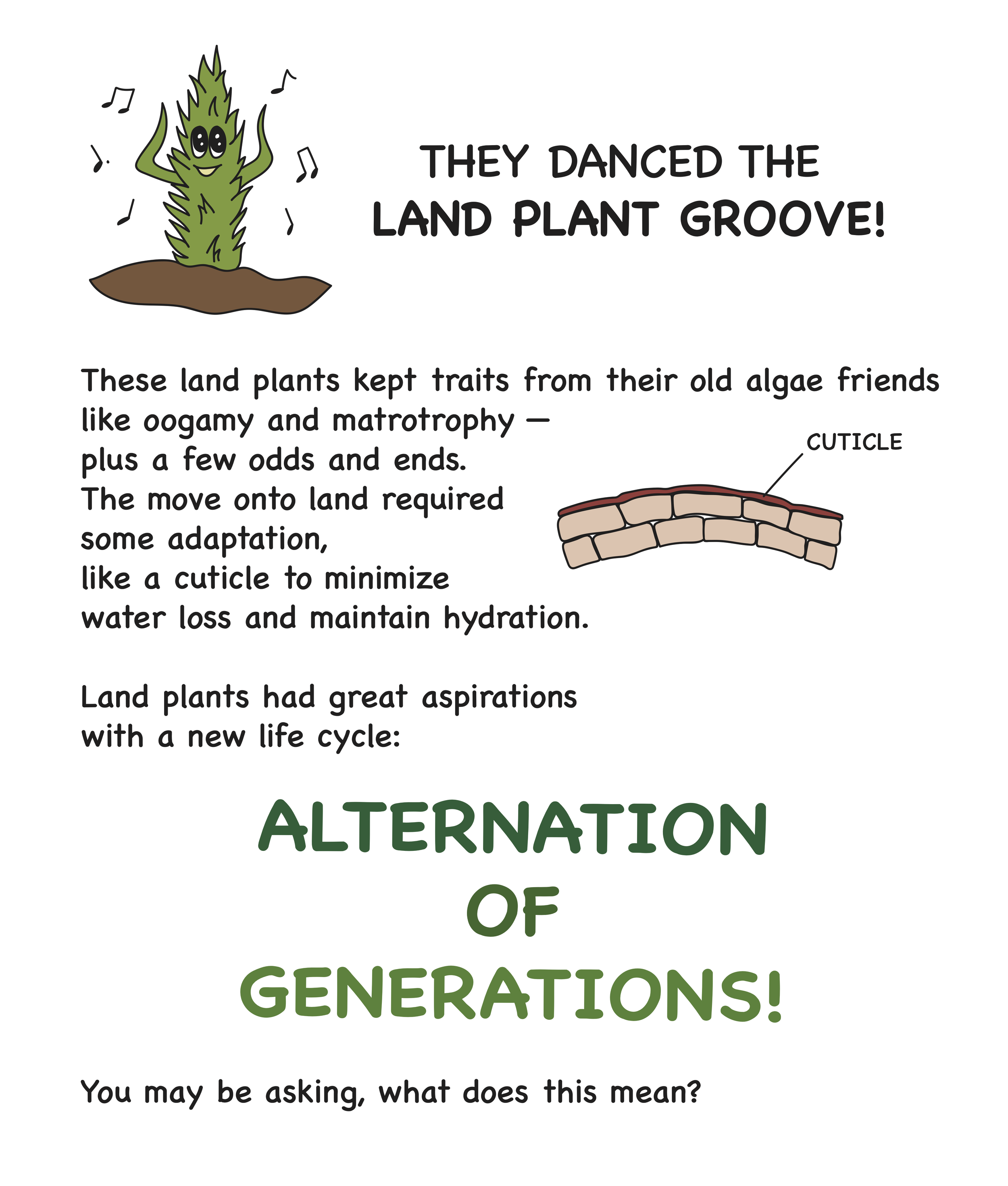
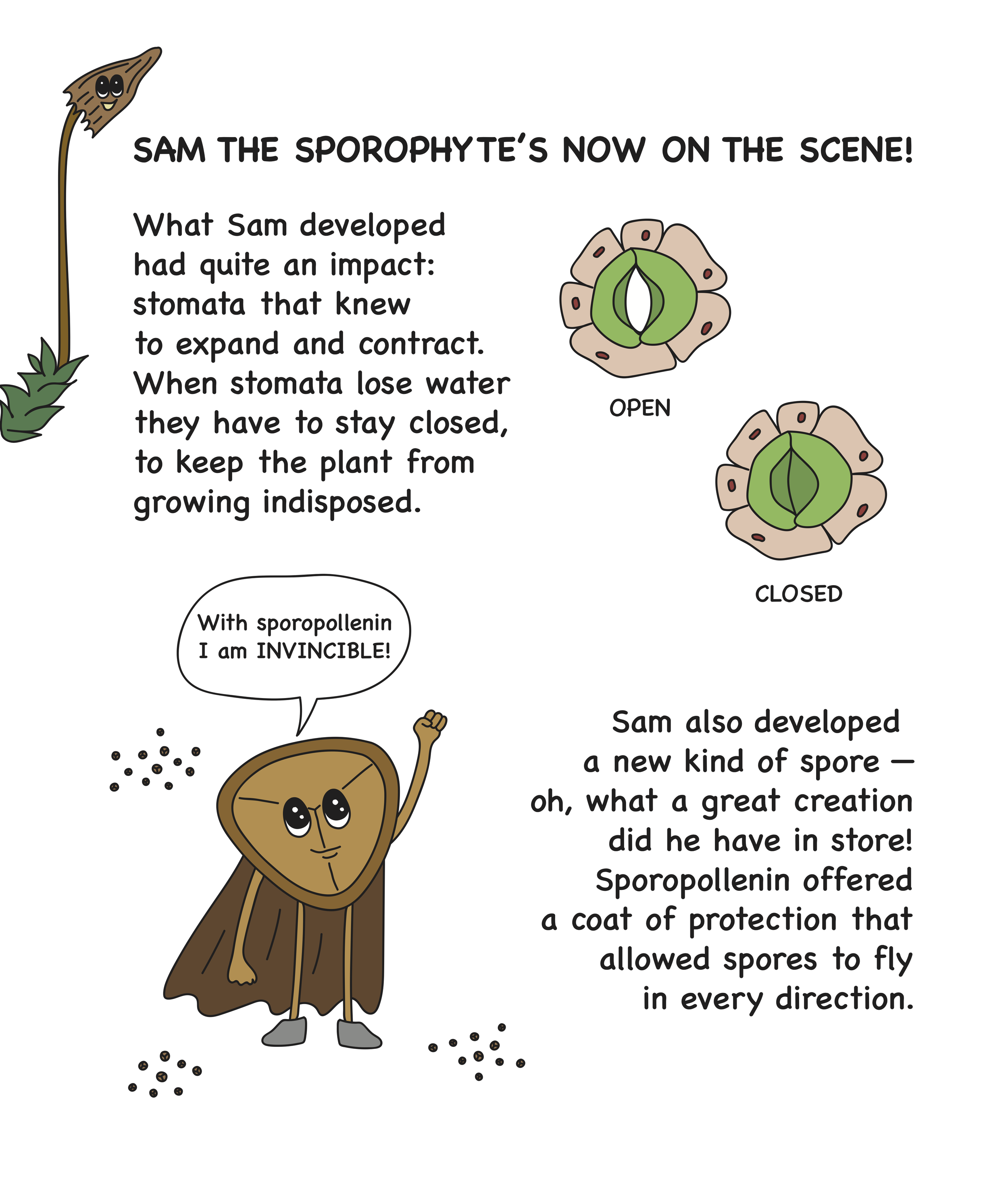
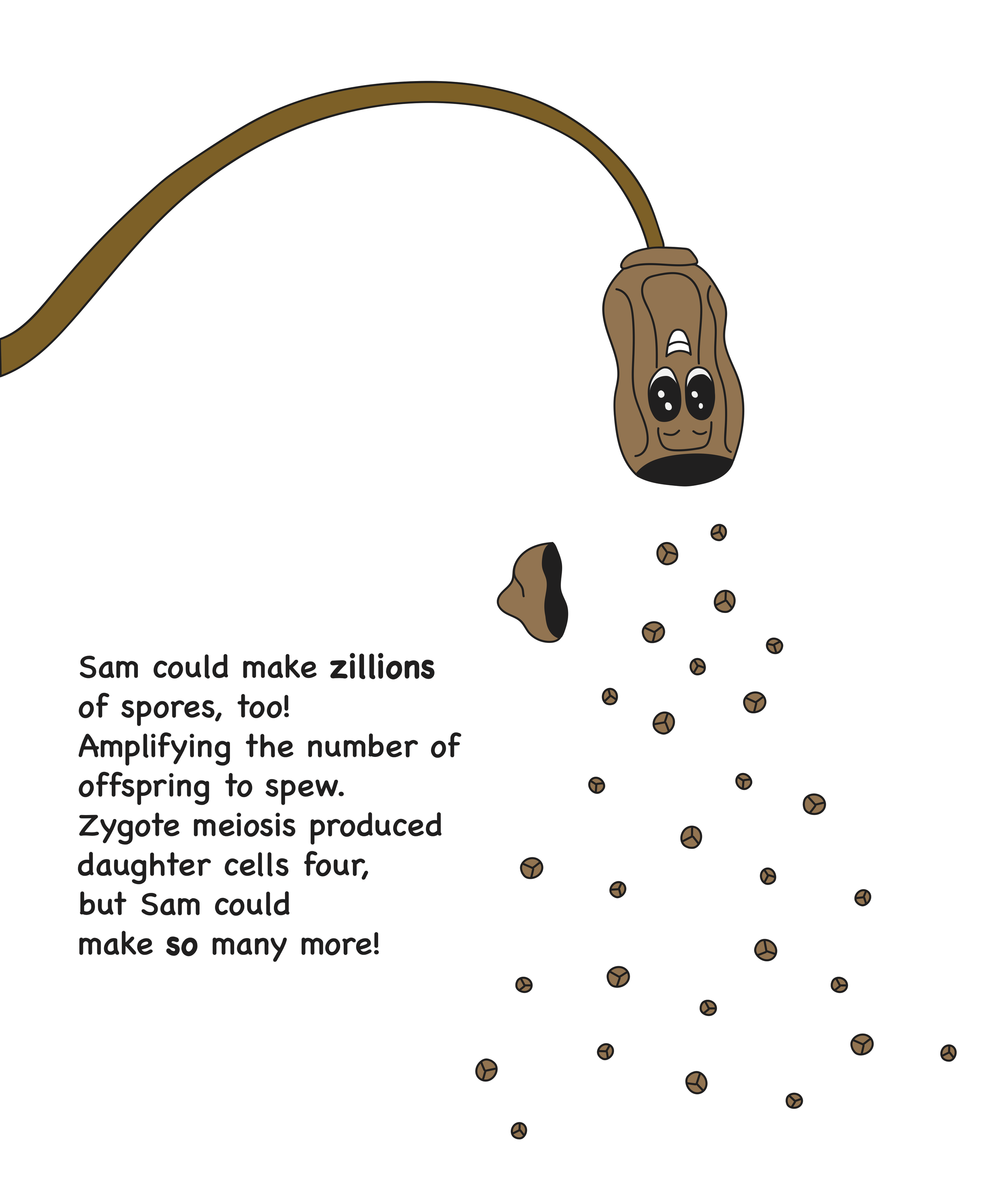
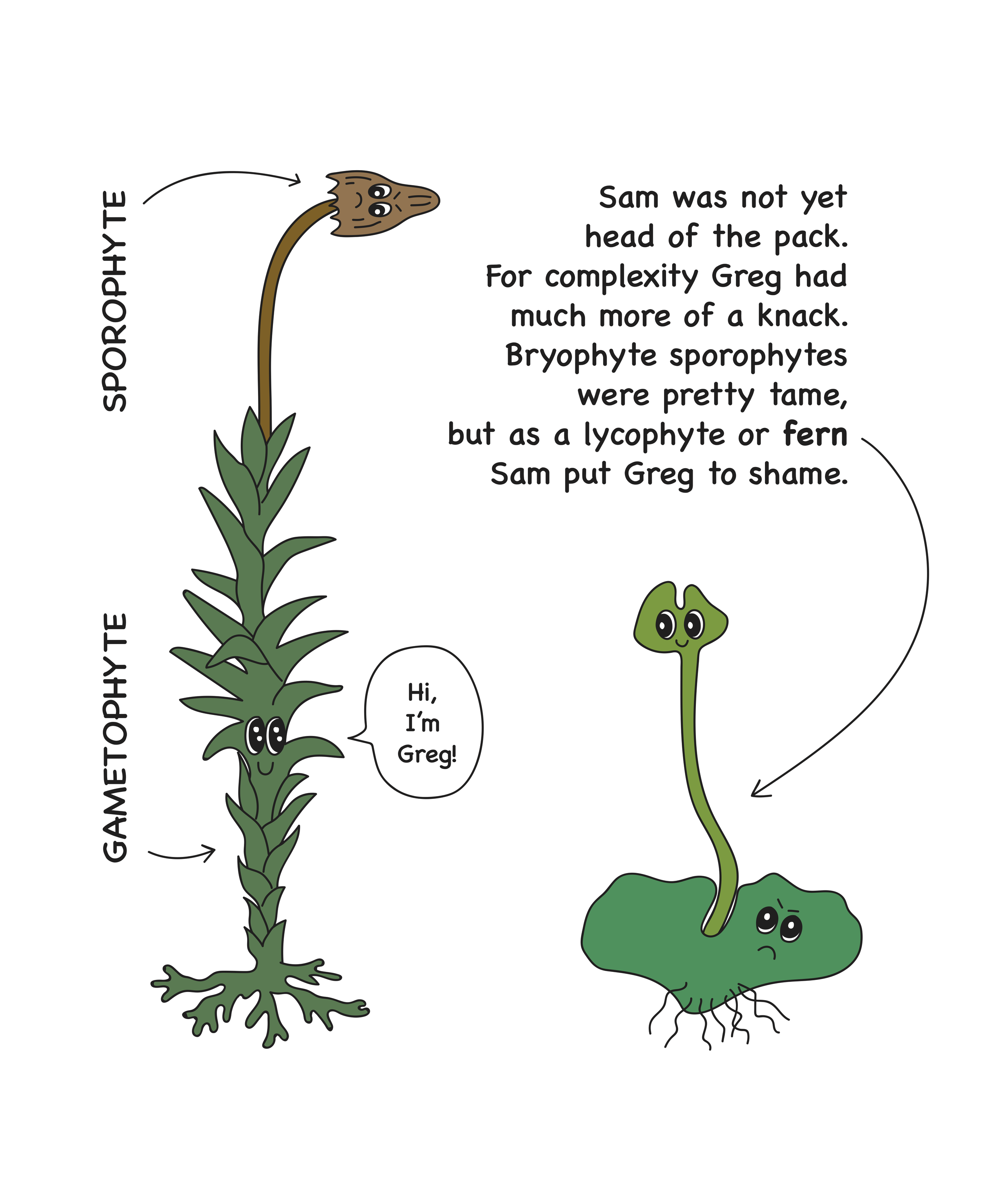
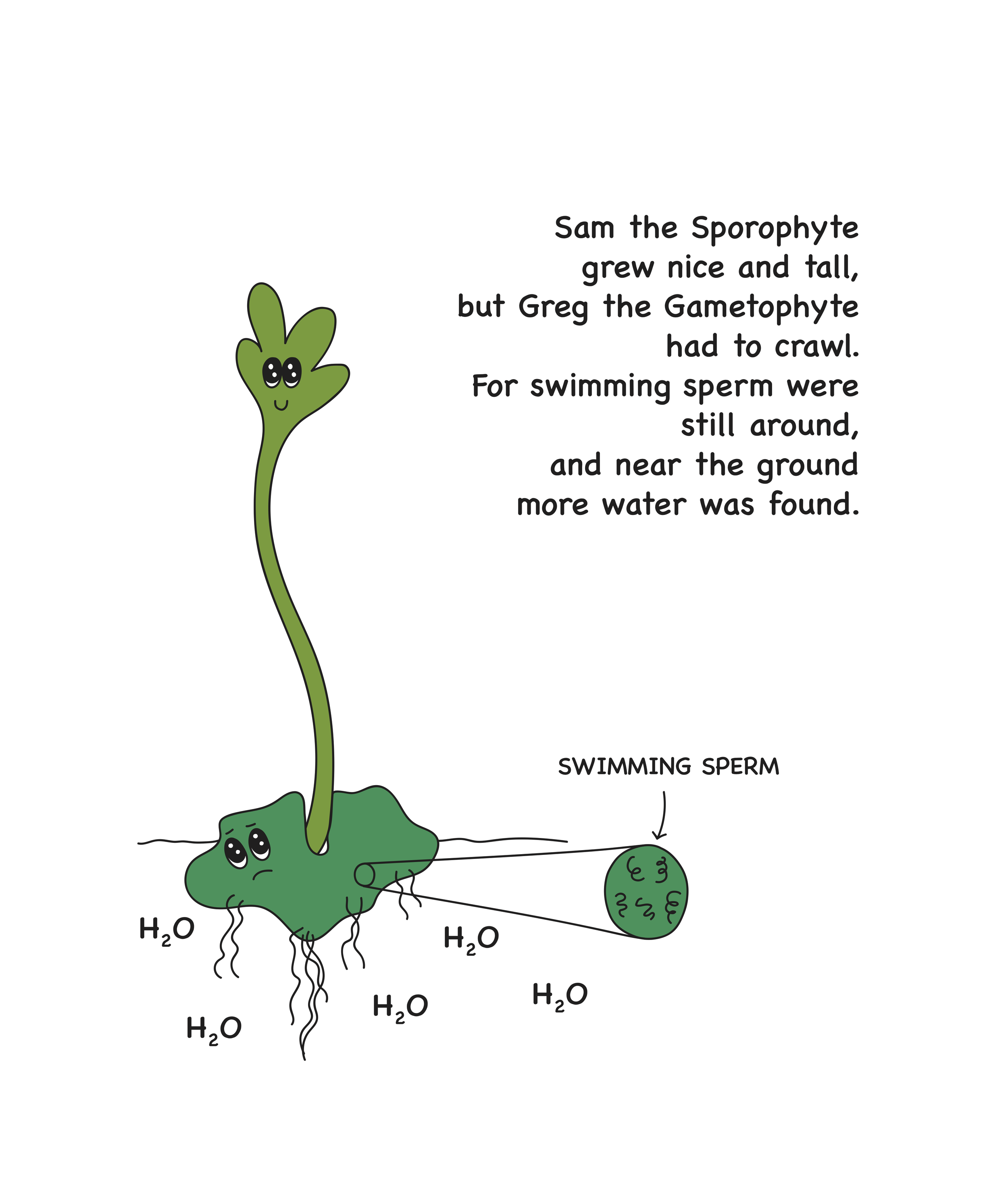
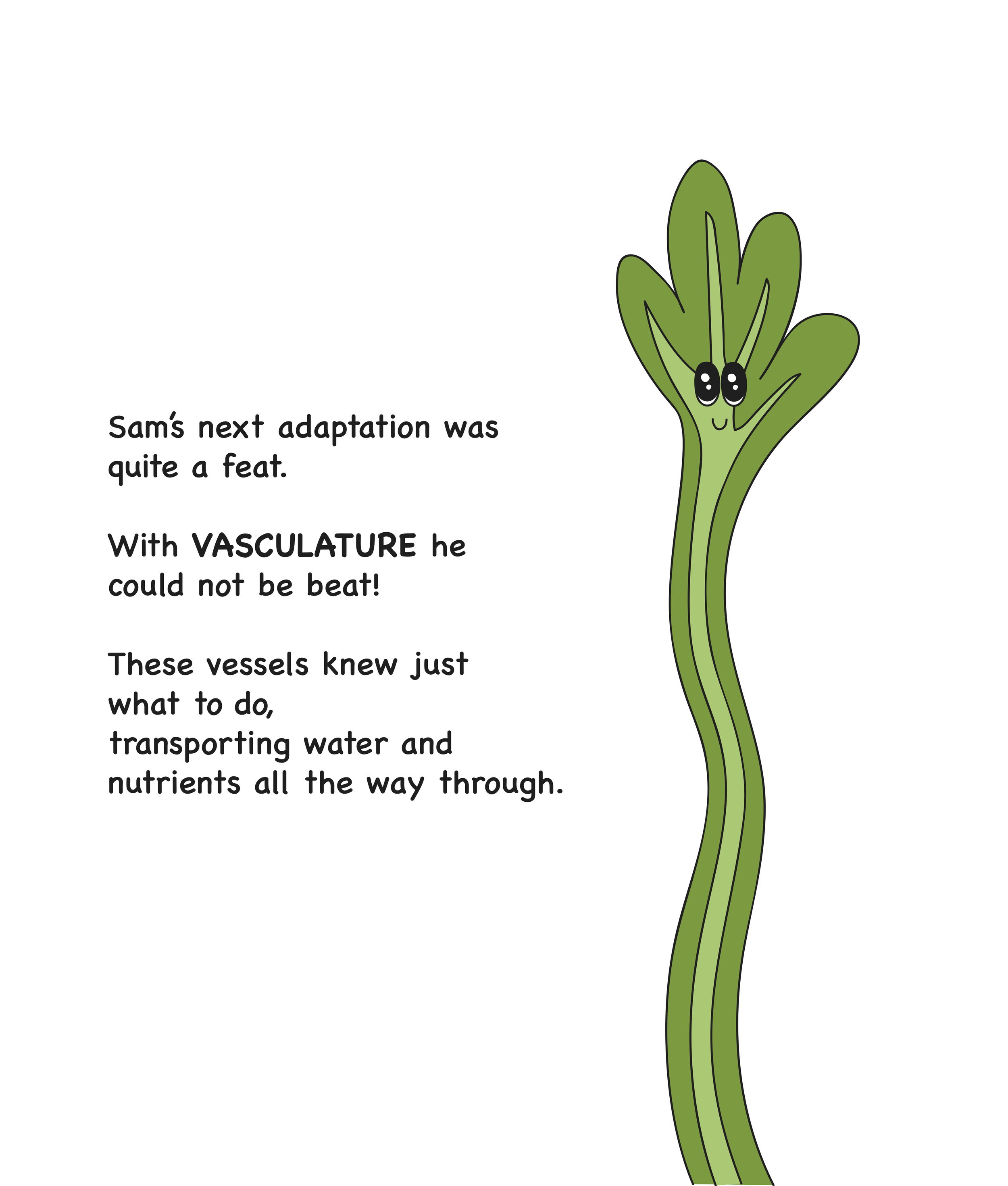
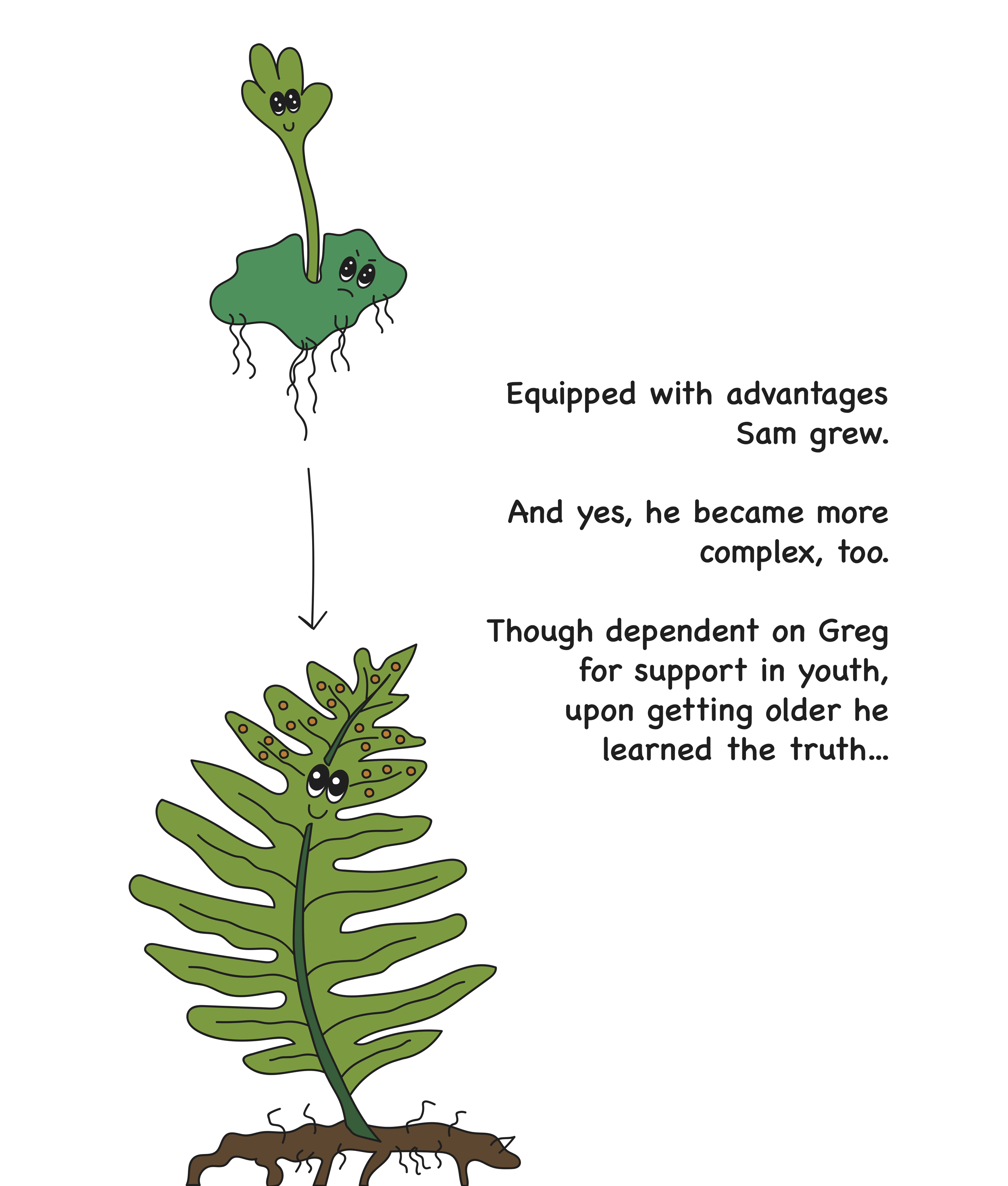
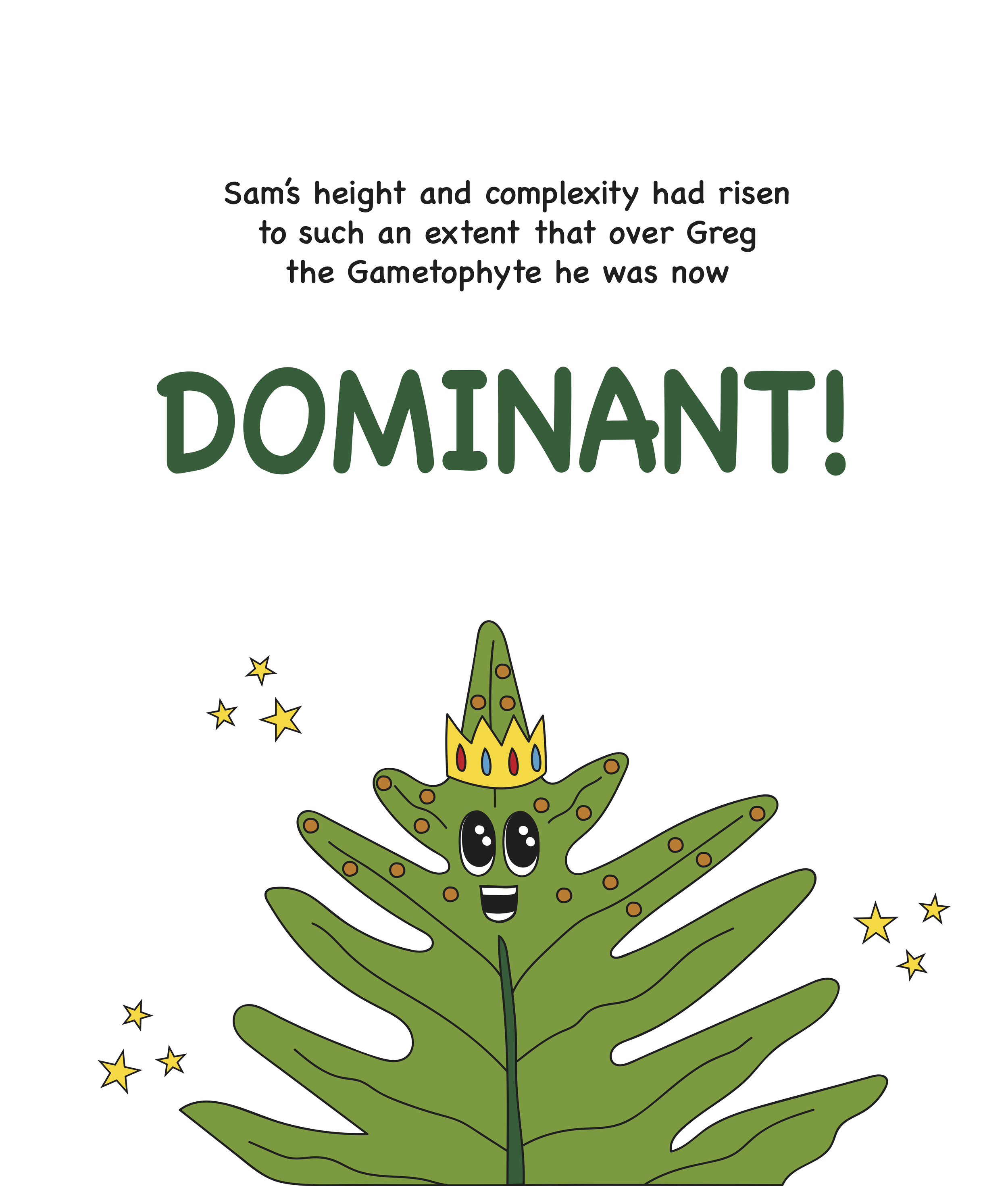

Glossary
Alternation of Generations
Before defining alternation of generations, let me break down a few relevant terms:
Haploid — Having a single set of chromosomes from only one parent in a cell.
Diploid — Having two sets of chromosomes in a cell, one from each parent.
Gametes — Reproductive cells (eggs and sperm).
Zygote — A fertilized diploid cell formed by the fusion of an egg cell and and sperm cell.
Gametophyte — A haploid plant that produces gametes.
Sporophyte — A diploid plant that produces spores.
With the emergence of land plants came a transition to the alternation of generations life cycle in which plants alternate between haploid and diploid life stages. During the haploid stage, spores grow into a gametophyte, which produces gametes. These gametes fuse to form a zygote, thus entering the diploid stage. The zygote grows into a sporophyte, which produces haploid spores, and the cycle restarts.
Each generation is specialized for the different challenges of living on land. Gametophytes are beneficial for fertilization because they are typically shorter and closer to the ground, where water is more likely to be present for swimming sperm. Sporophytes are well suited for the process of dispersal, because they are taller in stature and can thus more effectively release spores into the wind.
Bryophytes
A group of land plants comprised of mosses, liverworts, and hornworts with a gametophyte-dominant life cycle.
Lycophytes
An ancient lineage of vascular plants that exhibit sporophyte dominance.
Matrotrophy
The retention of the the zygote and supply of parental care to it.
Oogamy
A mode of fertilization where an active, motile gamete (sperm) fertilizes an immotile gamete (egg cell).
Sporopollenin
A complex polymer that serves a protective function for spores and pollen grains.
Stomata
Pores found in the outermost cell layer of leaves or stems that open and close to control gas exchanges between the plant’s internal air spaces and the atmosphere.
